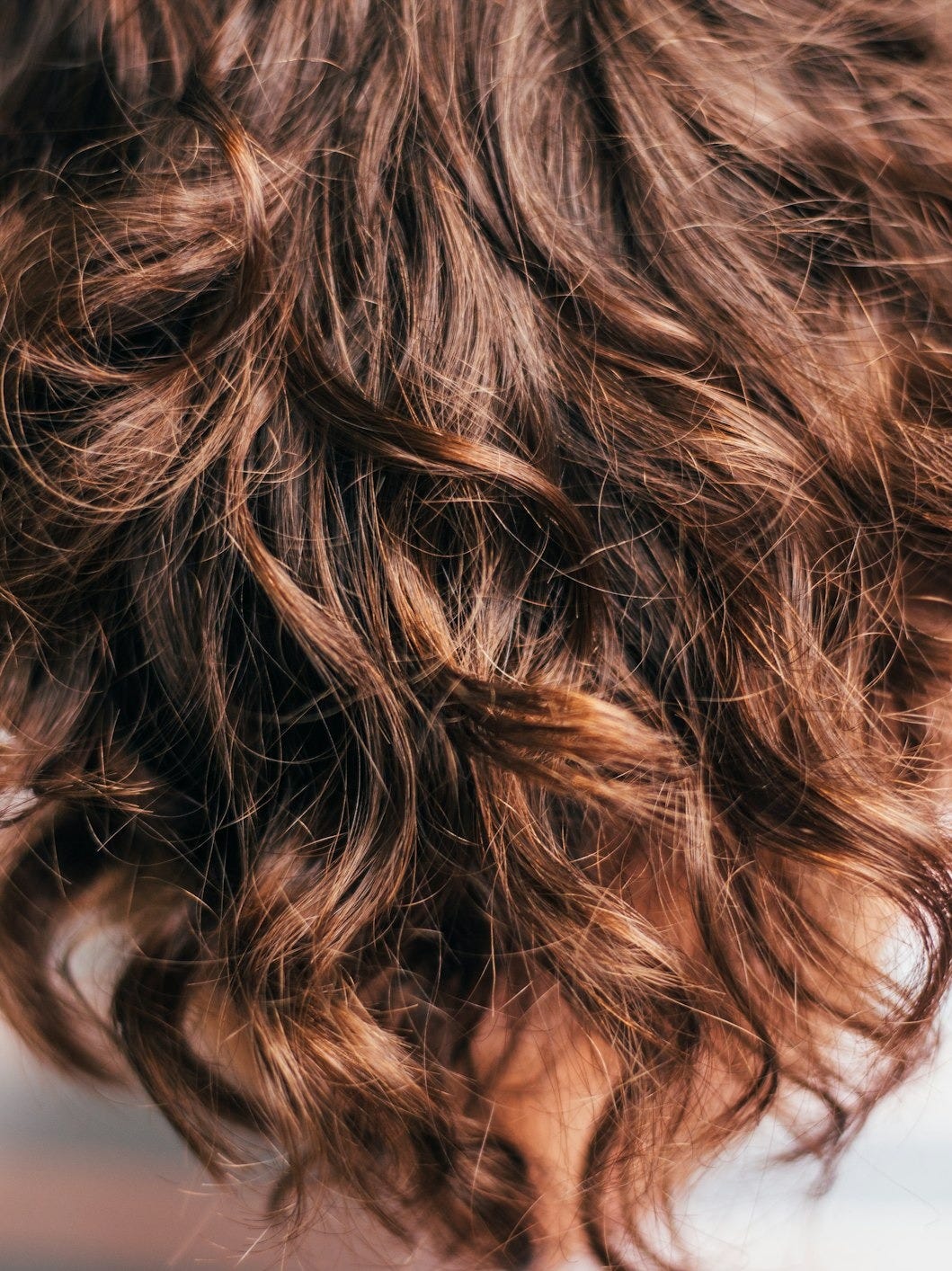How to Age Better: The Hare on Your Head
No, it's not a typo...it's the irony of a once-full, rapidly-growing head of hair.

One of the most common complaints of women of a certain age - besides weight gain - is hair loss.
No matter how often I see the substantial handful of hair left behind after I wash my hair, and the amount that is left in the brush each time I use it - I’m amazed there’s still hair on my head. (Although, I’m loathe to admit, that hair is far from what it used to be.)
What it used to be: So thick I could not even wind a scrunchie around it.
What it is today: So thin that the scrunchies need multiple rounds of winding to make contact. (And they don’t always stay put, dammit. The other day my son’s adorable new puppy, Dolly, was running around with my pink scrunchie in her mouth. Thanks for the reminder, pup!)
Shedding is normal, sure. The typical head loses between 50 and 100 strands each day. And depending on your hair’s growth cycle, it could be even more than that.
Like the weather, planets, our moods, and our (once) process of menstruation, hair has cycles, with four distinct phases. (Isn’t it interesting that there are also four phases of the menstrual cycle as well?)
There are, on average, about 100,000 hairs on our scalp that go through the cycle. During the first three cycles, hair grows, transitions, and rests. During the fourth, the “old” hair on your head sheds. By this time, there’s usually new hair waiting to replace what’s lost.
The lifeline of a single hair is between two and seven years
But here’s the rub: As we age, not only do our hair follicles and strands shrink and contain less pigment (hello, grays!), but the shrinkage causes our formerly thick, coarse hair to switch allegiance and become thin and fine. And to make matters even worse, many hair follicles all-out quit (retire?) and stop producing new hairs. (Notice the paragraph above, where usually is italicized? That’s why.)
What it all adds up to is hair loss, which comes in different varieties. The most common type of hair loss is “Pattern hair loss (androgenetic alopecia),” affecting about 50 million men and 30 million women in the U.S. When it happens to women, it’s called “female pattern hair loss.” Your hair slowly thins throughout the scalp, (usually the top and crown), and the hairline won’t usually recede (I know this is of little comfort for some, because sometimes the hair loss is so dramatic that your scalp becomes visible).
About two-thirds of post-menopausal women experience thinning hair, typically as “diffuse thinning on all areas of the scalp,” known as female-pattern hair loss, according to the American Hair Loss Association.
Besides menopause and aging, there are other types of hair loss, of course. Some are caused by chemotherapy, others by traction (as in hairstyles that pull the hair too tightly) or harsh hair products. Hair loss can also be triggered by medications (like some antidepressants or anti-seizure medications, among others), extreme stress, acute or chronic illness, various medical conditions like autoimmune diseases or thyroid disorders, or anemia.
Five Facts/What can you do about your hair loss
Aside from commiseration, some other things can help with your hair loss:
Minoxidil can be applied directly to the scalp or can be taken orally. Keep in mind that with either, gains in growth will recede if you stop treatment. Here’s the scoop.
Eating healthfully is always a good habit, and even more so to keep your tresses in good stead. Learn helpful and healthful tips from the Mayo Clinic by clicking here.
Haircare brands, like Keranique, can help add thickness and volume to hair with a panoply of products that promote thickness and volume. I recently attended a virtual event with the brand and must say I’m anxious to put their products to the test!
There’s always hair transplantation (no thanks). And things like wigs, clip-in extensions/hairpieces (aka “toppers”), and other remedies are available from companies like Luxy Hair and Lauren Ashtyn. (I’m tempted…)
In the meantime, protect your drains (and plumber bills!) from accumulating hairs with something like this.
If you’re losing hair rapidly or in an unusual pattern, have pain or itching, or have areas of infection of your scalp, it’s wise to contact a medical professional for guidance.
They may want to test your thyroid, your vitamin and mineral levels and/or hormone levels to see if they’re where they need to be.
And finally…
Some trivia to amaze everyone at your next Zoom Happy Hour: Did you know that hair grows everywhere on the body - with the exception of a few places? Eyelids, soles of the feet, palms of the hands, and lips.
Like what you’re reading? How about a subscription to keep it going?
And if you love to engage in conversation or commiseration, I’d love to hear your thoughts!




Thanks for this post. My husband is in Sweden, recovering from a fractured femur. I was so worried about his wellbeing when I saw him that my beautiful thick hair (all my life prior) started falling out.